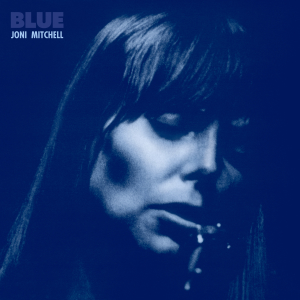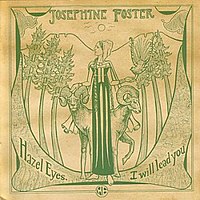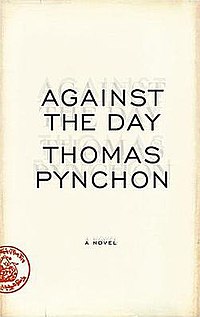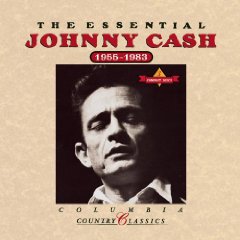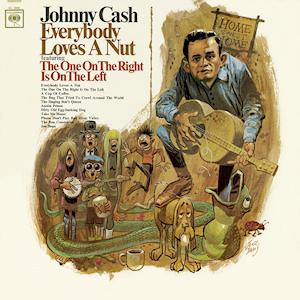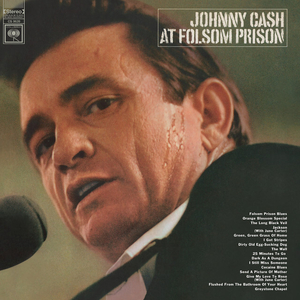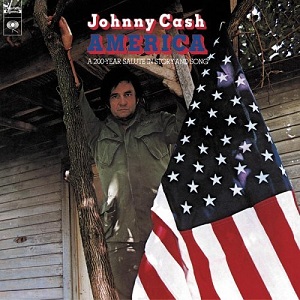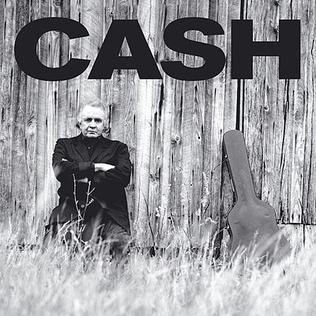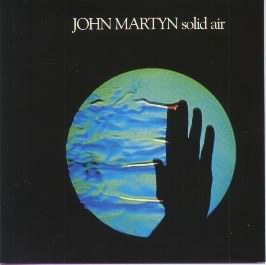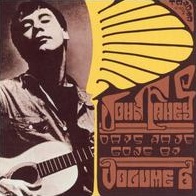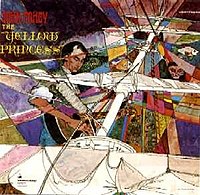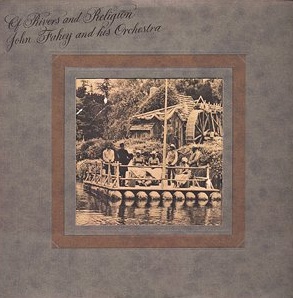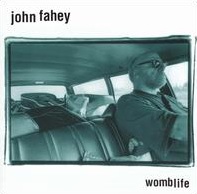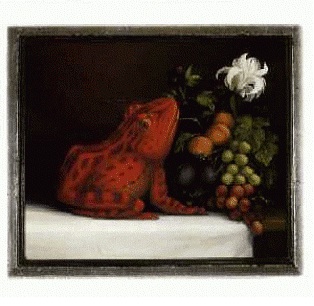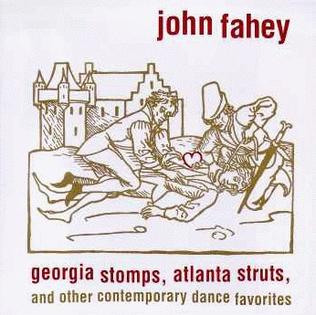I've considered
Gravity's Rainbow to be among my favorite books since I spent a week reading it when I was 20. I remember how overwhelming the experience was: the absence of anything approaching a traditional plot structure with seemingly disjointed episodes leading further and further into confusion, the characters hilarious and exasperating and opaque, the sublime ridiculousness of the plot points, the extremity and vulgarity in the many, many sex scenes, but more than anything Pynchon's ability to draw pure poetry and a near-gnostic wisdom from his cartoonish hyper-reality.
I'd been touched by great works of literature before, but this was the first great work of literature that fundamentally changed me. My entire way of seeing had been engulfed by
Gravity's Rainbow. An arc of history had me caught in its parabola. I wondered how to dislodge myself before the inevitable crashdown. I reveled in my small freedoms. I grew more paranoid.
I wasn't previously unfamiliar with paranoid fiction. William Burroughs, Robert Anton Wilson, and Philip K. Dick had all had been brief obsessions, although none were capable of Pynchon's grand sweeping vision and masterful use of language. But unlike many other artworks that I thought profound, I had no interest in re-reading it anytime soon. I've likened that first read of
Gravity's Rainbow to climbing Everest. How many people suffer their way up to the peak and then think,
-I'll have to do this again next year? Not many.
I've had a hard time deciding how many times I've read
Gravity's Rainbow. I did a cursory read again, some years later, although I recall rushing through many of the episodes in the earlier and later parts, only lingering over the long third part of the book,
In The Zone, which is the funniest. And I went back to read certain episodes here and there over time. But I'd never spent the time to rewalk each step carefully through the whole thing again since my too-rushed first read. Until now. I've spent the last six months re-reading
Gravity's Rainbow bit by bit. And I've decided to officially call this my third full read of the book, although it could be the second, the fourth, or - one could argue - the first, since time and memory struck much of the book in the intervening years, while time and experience leant me a new perspective.
So, I've been assuming that if you've read this far done, you have some context for
Gravity's Rainbow, but if not, here's a brief summary of the unsummarizable: the novel takes place at the end of WWII and is set in England, liberated France, and thereafter in the fractured Germany and other parts of Central Europe. The central figure of the novel is Tyrone Slothrop, an American intelligence soldier who was subjected to Jungian conditioning when an infant that makes him particularly susceptible to the, well, mystical properties of V-2 rockets as an adult. Like Benny Profane in
V., Slothrop is a chaotic stumbler towards truth, and the deluded servants of order, represented by Pointsman in this novel and Stencil in
V., cannot resist attempting to use him as a tool. That's an oversimplification, but I'm trying to keep it simple here. Although Slothrop is the central figure, there's many, many, many other characters in
Gravity's Rainbow, and often Slothrop has nothing to do with with action in a given episode. Okay, the episodes: the book is split into four parts: (1)
Beyond The Zero, which takes place in England during the Blitz in the last months of 1944, (2)
Un Perm' au Casino Hermann Goering, which takes place at a casino in liberated France in the first months of 1945, (3)
In The Zone, which takes place in Central Europe, primarily the former Germany, in the middle of 1945, and (4)
The Counterforce, which leaps all over Europe and America and forward and backwards in time, but most of the "present" action takes place in late summer/early fall 1945. I mentioned the mystical aspect of rockets. Much of the latter two sections are about a search for information about a unique rocket, the Swartzgerat ("black device"), which is symbolically important for reasons that are unclear to most of the characters. Much of the story deals with the idea of sacrifice, the symbolism of the Tarot, and the importance of Jungian archetypes (for instance the story of Hansel and Gretel plays a key part in the meaning of the Swartzgerat to those who fired it). The meaning of the Swartzgerat's target, though, is essential to the structure. Each of these parts are divided into episodes, set off by an elliptical sequence of boxes. The episodes have a particularly cinematic feeling to them. As in film editing, they often have no literal connection to the previous episode, but derive meaning from their sequence. I suspect that this summary will leave those with little knowledge of
GR more confused than before, but I don't know how to be more clear with this book.
So yes, it's a little challenging. But it's beautifully written, even in the ugly parts. And it's funny as hell. Often. Not always.
I spent the first part of 2009 reading
Against The Day, Pynchon's 2006 novel about the world changing during the Progressive Era in the years leading up to WWI (although the novel mostly ignores the war itself and continues into the post-war period, which I suppose could also be considered the time leading up to WWII).
Against The Day was published 33 years after
Gravity's Rainbow, and many readers see it as a prequel. I don't think that's fair, though. Pynchon's interests have changed over time: instead of being about how technology turns magic into reality (which is my one-sentence, completely insufficient thesis statement for
Gravity's Rainbow),
Against The Day is about how science drains the possibility of the natural world into a determined reality (again, yes, insufficient, but there you go).
Against The Day opens with the 1893 World's Fair in Chicago, which drew crowds (in the novel, at least) hoping for technological miracles to free them from the misery of their everyday lives. The opening chapters introduce the Chums of Chance, one of several outdated escapist fictional threads that the novel employs to show how the avenues of escape have closed with the advent of the Industrial Age. In
Gravity's Rainbow, the magic of the Tarot became the reality of the archetypes haunting Europe after WWII. In Against The Day, the magic of pre-20th century utopianism (represented by the aether, the hole through the middle of the earth, the Chums of Chance, the promise of freedom calling to the anarchist miners, the possibility of other worlds suspected by the mathematicians, and so on) becomes impossible in the light of science's cold eye.
The Chums of Chance are a crew of children who travel by airship (the
Inconvenience) to various adventures, guided by the mysterious Central Command. When the novel focuses on them, the tone is generally light and utopian, at least at first. Other threads in the novel include trevails of the widespread Traverse family, which include anarchist utopians and Western revenge dramas and pre-War European intellectual bohemianism, the threat of the Vibe family, the classic robber barons who have fingers in everything, and the impotent machinations of the British mystical society T.W.I.T. The scope is epic, and characters in the novel cross the entire world, even going to a Counter-Earth at one point, although most of the threads wind up in dirty old L.A., where the advent of the movies leads to a noir-ish bleakening of the tone. And I haven't even mentioned the major thread of Merle Rideout and his adopted daughter Dally, who have the most tender relationship in the book. Nor have I pointed out that
Against The Day is utterly hilarious, although the funniest episode may be the early sequence when Franz Ferdinand - the doomed Crown Prince, yes - attempts to engage some of the black citizens of 1890s Chicago in a round of The Dozens.
The nature of light and dark is of keen importance throughout the novel, and much of the action is governed by light. Of particular importance is Iceland spar, a mineral that refracts light into two places: one sharp and one ghostly. Characters in the novel call this "bilocation," and one of the threads involves being literally in two places at once. An explosion (a blast of light) tears one character, Lew Basnight, from his current reality and thrusts him into another. Extrapolating from this, the bombs of coming wars - especially WWI, so terrible that Pynchon's characters can hardly even conceive of it - tore reality asunder. Light also plays in smaller subplots, such as Merle Rideout's obsession with the Aether or the way that Scarsdale Vibe shuts down Nikola Tesla's plan to harness geo-energy to provide free heat and lighting for the masses. According to one of the inscriptions - a quote from Thelonious Monk, from whom I borrowed my son's middle name - "It's always night, or we wouldn't need light." Light is not just the way out of ignorance, but the way out of certain types of potentiality.
I think
Against The Day is as good as
Gravity's Rainbow, if not better. Maybe it's silly of me to talk of one being better than the other, because they are of a piece.
ATD couldn't exist without
GR. But
GR is augmented by
ATD. Re-reading
GR's paranoid urgency in the light of
ATD's wiser flights of fancy flips their relative time frames and makes it seem like there is a way out of the Zone.
Upon finishing
Gravity's Rainbow, I knocked out Jonathan Lethem's most recent novel
Chronic City in a couple of days. Lethem shares with Pynchon a sense of paranoia and an affinity for absurd names. It's unfair to Lethem, though, that I would pick up one of his novels on the heels of one of Pynchon's. Lethem may be one of the greatest American novelists of his generation, but Pynchon is one of the greatest American novelists. After Pynchon, Lethem seemed lighter than usual. The novel is about an actor, Chase Insteadman, who befriends a prickly pop culture critic named Perkus Tooth. The two spend hours smoking weed, watching movies, and so on. Their circle widens. Tooth becomes obsessed with an artifact called a chaldron, which leads eventually to their discovery that much of their reality isn't quite as authentic as it seems. There are multiple surreal touches, such as the artist who creates enormous gaps in the Manhattan landscape or the two-story tiger destroying unwanted housing or the encroaching environmental collapse that the characters hardly notice. And yet I finished the book thinking
...and? Again, this is my fault, not Lethem's, but
Chronic City seemed awfully slight after
Gravity's Rainbow. What wouldn't?
Note: the image at the top of this post is from Zak Smith's
Pictures Showing What Happens on Each Page of Thomas Pynchon's Novel Gravity's Rainbow, illustrating the immortal phrase
Ficht Nicht mit der Raketemench!










